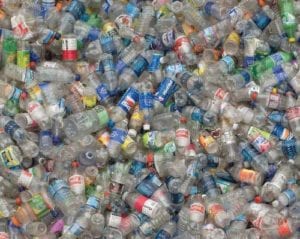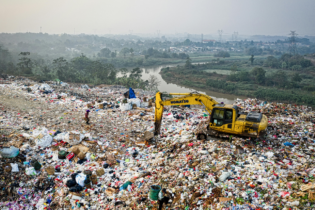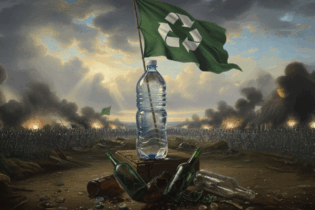How can plastic products be made more sustainable over their entire life cycle and how can the effects of plastic waste on the environment be reduced?
These are some of the questions asked in a recently published green paper from the European Commission. EU Environment Commissioner, Janez Potočnik, focuses on the high resource efficiency that can be attained with plastics if recycling management systems function properly and high recycling rates are made possible as a result. He calls on all interested parties to consider “how plastics can become part of the solution rather than the problem”. It may perhaps not be immediately obvious that plastics play a very effective part in relieving the burden on the environment during their life cycle. They enable multi-functional parts to be produced at low effort, which are both light in weight and very load-resistant. And while a packaging may weigh only a few grams, it still gives the contents a long storage life. Low weight essentially means low material consumption and energy savings during transport, thereby conserving resources. At the end of their service life, plastics are valuable raw materials that can be returned to the material cycle in an environmentally friendly manner, so that they can significantly reduce the amount of virgin material required for many applications. Even their thermal recycling makes ecological sense, because they still contain the energy of the fossil feedstocks from which they were originally produced. The “genes” themselves are thus good. The challenge globally is to use them as efficiently as possible. Avoiding waste from the beginning The main reason for the recent questions posed by Potočnik, says the green paper, is the international dimension of an environmental problem that is seen, among other things, in the growing accumulation of plastic waste in the world’s oceans. The problem is that many countries still regard plastics as an inexpensive one-way material and therefore have correspondingly low recycling rates. The authors also bemoan the dumping of around half of Europe’s plastic waste in landfills despitethe possible accompanying environmental effects. As an alternative, they highlight the potential economic benefits and the resource-saving effect of higher recycling rates.With regard to the handling of plastic waste, the European Waste Framework Directive (2008/98/EG) places the focus on aspects such as thinking in life cycles, avoiding waste instead of disposing of it, ensuring greater producer responsibility and improving product design, resource efficiency and resource conservation. Nevertheless, say the authors of the green paper, the current EU waste legislation does not go far enough: The general call to give priority to avoiding and recycling waste over other methods of disposal is, in view of the special characteristics of plastics, not enough. One of the declared aims of the latest EU initiative is therefore to create better framework conditions to take into account the aspects of recycling and waste avoidance at the early design stage of a plastic product.
26 answers to a better environmental policy The relevant facts and opinions are being collected on the basis of replies to 26 questions in a survey that ran in 2013. The answers will help with an evaluation of the effects of plastic waste and be used to adapt European legislation so that the recycling of plastic waste has priority over landfills. The green paper also asks questions about the effectiveness of potential recycling targets, about possibilities for making the chemical design of plastics more suitable for recycling, about reducing the discharge of plastic waste into the sea and about the need to provide financial support for biodegradable plastics. According to the EU, the result of the survey will be reflected in political action from 2014. In particular, it will have an effect on the general revision of the waste policy in which the targets for waste recycling and landfills are to be examined. Source: RIGK







